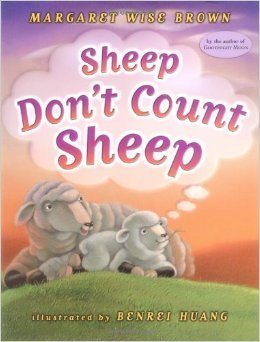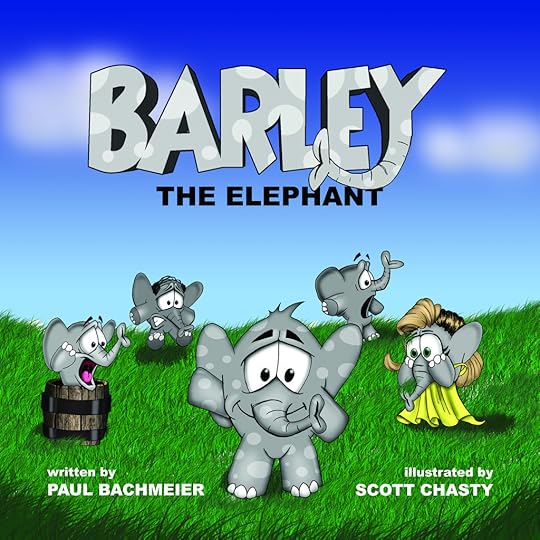Bonnie Ferrante's Blog, page 101
April 9, 2014
Brown, Margaret Wise – Sheep Don’t Count Sheep – Book Review

Margaret Wise Brown is well known for Goodnight Moon. Sheep Don’t Count Sheep is also a bedtime story. It starts out rhyming and sing song, then suddenly breaks the pattern, and at the end goes back to the first pattern. The last page has the music for the rhyming part. Unfortunately, I found the switches in style abrupt and disjointed. What started out as a soothing lullaby morphed into a completely different style of book.
The concept of trying to get a little lamb to go to sleep was endearing. He behaved much like a human child, too interested in everything happening around him to focus on sleep. If Brown had stuck to the same pattern, I would highly recommend this book, but as it is I don’t find it that satisfying.
The title seemed misleading as well. It sounded as though the story would be a humorous one wherein we discover all the things that sheep do count instead.
The illustrations are done by Benrei Huang and have a dreamlike, glowing quality. The softness of the lamb is reflected in the moon and clouds, the butterflies and flowers, and even the landscape.
This picture book does not reach the same level of quality as Goodnight Moon. I feel it could’ve been so much more.


April 8, 2014
Your baby’s First Book

There are numerous board books available for babies with simple pictures on each page such as sippy cups, rattles, and dogs, but unless your child has exactly this item they may not immediately connect. The first book my grand daughter enjoyed was handmade. I bought a mini scrapbook and, using my camera and printer, created pictures relevant to her life. The first page was a picture of her with her name underneath. The second was mommy, the third daddy, the fourth and fifth her sisters, then grandparents, and so on. The next few pages were toys and items around her neighborhood. At first she was puzzled and kept trying to pick up the items but it didn’t take long for her to learn how to turn the pages. Now she squeals with happiness whenever I take the book out. Eventually she will recognize that the foam letters glued below each picture are words. This will probably be the first book she “reads”. This can be a fun item to create for baby with older children.


April 7, 2014
Using Illustration to Simplify Your Writing
If you’re writing a children’s picture book, you probably won’t be doing the illustrations yourself. Publishers do not want you to submit pictures with your words unless you are a professional. However, it is important for you to visualize the book in its full format.
Storyboards are essential for picture book writers. These do not need to be submitted to the publisher. However, they will help you to understand several things about your book. One important feature is that it will clarify what can be revealed in the illustrations and what needs to be explained in the words. A good rule of thumb is, if it can be drawn, it doesn’t need to be written. You may decide to feature one element from the words, show what happens next without writing it at all, or expand on what has been written.
You may decide to add illustration notes if it is essential to the story for the picture to be drawn according to your vision. However, giving the illustrator free reign may take your work into an entirely new direction. Trust the illustrations to tell half the story, whether you are doing them or the publisher is providing the illustrator. The completed story may be entirely different from what you imagined but this is typical when collaborating in the arts.


April 6, 2014
Bachmeier, Paul. Illustrated by Scott Chasty. Barley the Elephant – Book Review

Barley the Elephant is a charming picture book with witty illustrations. Scott Chasty adds clever asides to several pages that readers of all ages will enjoy. The expressions on the elephant’s face at each disaster are hilarious.
Barley is an elephant with spots in a classic tale of not appreciating what you have until it’s gone. This is a thoroughly enjoyable book, however, I thought the story concept was written for ages 3 to 5 but the vocabulary and illustrated witticisms seemed suited to older students. I would’ve liked to have seen a different problem resulting from the crocodile skin than from the tiger skin.
It would be a great story for reading buddies where an older child reads to a younger one or a adult reads to a child. I would suggest that, the first time through, the reader stick to the main story as younger listeners may find all the distractions confusing. It’s the kind of book that can be read in layers.
I was pleased to see discussion questions at the end of the book and factual information on real elephants. As well, a glossary explained several of the more difficult words.
Barley the Elephant would be a delightful story for parents and children to share and discuss.
I was given a free ebook copy of this for review.





